The automotive landscape in motorsports changed rapidly after the success of Cooper and Lotus with their mid-engine cars. Reluctantly, Ferrari began experimenting with rear engine placement in its sports-racing and Formula 1 cars. Enzo Ferrari firmly believed that the engine should be placed at the front, much like a horse pulls a cart, but the success of the mid-engine cars on short and twisty circuits was undeniable and the die had been cast for a new era of design. Additionally, Enzo was a proponent of drum brakes and would continue to use this antiquated technology long after the benefits of disc brakes had been demonstrated. The traditional live-axle suspension remained a staple of the Ferrari fleet even after newer technology had been proven superior. During the close of the 1950s and into the dawn of the 1960s, Ferrari embraced disc brakes, an independent rear suspension through double wishbones, and a mid-engined layout.
Roadster by Fantuzzi
Chassis #: 0798
Engine #: 0798
View info and history
Auction entries : 2The Dino EngineWith the announcement by the sport's governing body that the 1961 World Championship would allow a maximum displacement of 1.5 liters, Ferrari began work on a new racecar from the ground up. In regards to the engine, Ferrari was in fine form as they had been developing a 1.5-liter unit since the mid-1950s. The 1955 edition of 1.5-liter Formula 2 supported the Grand Prix races where Ferrari was already a dominant contender, and the possibility of raising their status even further was alluring. Enzo's son Alfredo 'Dino' Ferrari and chief engineer Vittorio Jano settled on a V6 and both are credited with its design. Jano had only recently arrived at Ferrari following the Lancia buy-out and thus, the design was similar to the Lancia V8 which he had designed two years earlier. The Ferrari V12 engine used a sixty-degree V-angle, and initially, this was considered for the V6, but later widened to a sixty-five degree when the twin overhead camshaft heads left little room for the three double Weber carburetors. The crankshaft was modified to accommodate the wider V angle and in this guise developed 175 horsepower. This engine powered the new front-engined Ferrari 156 Dino F2 which resulted in a third-place finish in its racing debut at the Naples Grand Prix in April of 1957, followed by its first victory three months later. 
Roadster by Fantuzzi
Chassis #: 0798
Engine #: 0798
View info and history
Auction entries : 2The impressive performance of the F2 Dino encouraged Enzo to construct a new racecar built around the Dino engine for the 1958 F1 season. The engine's displacement initially grew to 1.9-liters and then to 2.2- and 2.4-liters throughout the season, with output reaching 270 bhp. Called the 246 F1 Dino, Ferrari experimented with various configurations and technology, including adopting disc brakes and an independent rear suspension setup. Luigi Musso, Peter Collins, and Mike Hawthorn earned Ferrari the Driver's Championship in 1958 but it came at a tremendous cost, particularly the lives of Collins and Musso. Hawthorn narrowly beat Moss in the World Championship standings and Vanwall clinched the Constructor's Championship. Vanwall retired at the close of the season, believed to have been a result of the high mortality rate of the 1958 season. It had been one of the most tragic seasons in F1 history as four drivers died in four different races. Along with Collins and Musso, Englishman Stuart Lewis-Evans lost his life in his Vanwall at the Moroccan Grand Prix in Casablanca, and American Pat O'Connor died at the (non-Formula one race) at the Indianapolis 500. The newly developed 2.5-liter version of the four-cylinder Coventry Climax engine powered the mid-engine Coopers to a very dominant 1959 season, especially on the low and medium-speed tracks. Ferrari remained competitive on the high-speed tracks which helped them finish second to Cooper in the two World Championships (albeit, little competition remained with Vanwalls departure). Hawthorn had retired at the end of the 1958 season (and tragically died a few weeks later in a traffic accident), and Phil Hill was retained from the 1958 season, joined by Jean Behra, Tony Brooks, and Cliff Allison. Tony Brooks placed second to Jack Brabham in the World Championship of Drivers. 
Roadster by Fantuzzi
Chassis #: 0798
Engine #: 0798
View info and history
Auction entries : 2Ferrari entered 1960 expecting to play 'second fiddle' once again to Cooper's mid-engined revolution but quickly lost its seat to the mid-engined Lotus and BRM racers. Modifications to the front-engined 246 Dino were minor, receiving a slight boost in power and updates to the chassis to improve performance. World Champion Jack Brabham continued to excel on the technical, twisty courses while the Ferrari remained a contender on the high-speed courses. Among the accolades earned by Scuderia Ferrari during the 1960 season was a victory at Monza with Phil Hill (the final victory ever for a front-engined car in F1). Ferrari had experimented with a mid-engined F1 car during the 1960 season but it was unable to match the performance of the conventional Ferrari cars. With the 1961 season limiting displacement to 1.5-liters, Ferrari discarded their previous mid-engine designs and began work on a new machine. Sports Car Racing
Roadster by Fantuzzi
Chassis #: 0798
Engine #: 0798
View info and history
Auction entries : 2Ferrari competed in a variety of racing series and much of the technology was shared, thus the new Dino V6 engine built for F2 and F1 soon found its way into the sports car program. Peter Collins debuted the Ferrari 206 S in 1958 at the Sussex Trophy, and only the astute observer could distinguish it from the contemporary V12 engined 250 TRs. The most distinguishable feature being the three sets of Webers protruding through the bonnet compared to the six from its larger-engined sibling. The 206 S proved competitive and was soon joined by a three-liter engined 296 S. At the end of the season, however, Enzo decided that the Dino-engined machines were too complicated and complex for privateers and the performance was unable to match that of the V12. The V6 program continued into 1959 and 1960 with the two-liter 196 S, but the front-engined car was outclassed by the more advanced mid-engined racers. Ferrari countered with two examples equipped with a 2.4-liter four-cam version of the Dino V6, with one receiving an independent rear suspension, but the competition (including the Porsche RS60) was lighter and nimbler. The era of front-engined sports car had come to an end. 1961 Season
Roadster by Fantuzzi
Chassis #: 0798
Engine #: 0798
View info and history
Auction entries : 2A 2.4-liter version of the engine was placed into two new sports cars (chassis number 0790 and 0796) built atop a purpose-built Type 561 chassis based on the 156 F1 Grand Prix car. Ferrari introduced these two cars in February of 1961 at their press conference, marking the first appearance of the Dino SP sports prototypes. These new prototypes would enjoy a competitive season and paved the way for further applications of the Dino engine, both in motorsport and road-going guises.The traditional Ferrari V12 naming scheme denoted individual cylinder displacement but for the junior Ferrari cars, the first two numbers of the model designation represented total displacement while the third number represented the number of cylinders. Thus, the 246 SP examples introduced in February of 1961 were equipped with a 2.4-liter V6. The elegant and purposeful spider coachwork was the work of Fantuzzi and a complete departure from prior Maranello styling. The new open design used a low-rise windscreen, an innovative sharp spoiler at the edge of the tail, and curved rear fenders. At the front was a protruding nose with a twin-nostril grille, similar to the styling used by the Ferrari 156 Formula 1 driven by Phil Hill in the World Championship in 1961. Several of the design cues introduced on these sports racers would be implemented into future designs including those of the 250 P and 330 P, along with the Scaglietti-bodied Berlinettas like the 250 LM. The protruding nose inspired the front design of the 360 Modena. 
Roadster by Fantuzzi
Chassis #: 0798
Engine #: 0798
View info and history
Auction entries : 2The first two 246 SPs showed significant promise during the 1961 season when they weren't plagued with mechanical issues. Among the accolades was a 1st overall finish at the Targa Florio, and 3rd place at the Nürburgring 1000 KM. Ferrari's arsenal for the 1962 season included the new 250 GTO, the new 156 F1 car, and four SP examples outfitted with four different engines. Along with the 246's original 2.4-liter displacement, the list now included a smaller and larger version of the Dino V-6 (respectively the 196 SP and the 286 SP), along with a V8 (the 248 SP). The engine powering the 248 SP was essentially two-thirds of a 400 Superamerica V-12, and installed in chassis number 0806 (the car shown at the press conference) and chassis 0798. Chassis number 0798 was the third of six SP examples built, soon followed by chassis numbers 0802, 0804, and 0806. Bodywork revisions of the 1962 SP cars were minor, perhaps the most visual being the windscreen height to conform with FIA's regulation, along with a lower tail. The 2.4-liter V8 engine was underpowered compared to the competition, so the stroke increase to 71 mm (the bore remained 77 mm) and displacement now measured 2.6 liters, and just four examples of this new Type 202 engine were reportedly produced, two of which were quickly installed into 0806 and 0798. The 40IF2C carburetors used on the 248 SP were replaced with Weber 40DC carburetors positioned on individual manifolds. The single ignition and SOHC configuration were carried over from the 248 SP, along with the 9.8:1 compression (or slightly lower 9.6:1). The 248 SP had developed approximately 250 horsepower at 7,400 RPM while the output of the 268 SP was 260 hp, only slightly more than the output of the 286 SP. 
Roadster by Fantuzzi
Chassis #: 0798
Engine #: 0798
View info and history
Auction entries : 2Chassis 0798
The 268 SP (0798) was driven by Scuderia Ferrari drivers Giancarlo Baghetti and Ludovico Scarfiotti in the 1962 24 Hours of LeMans, but were forced to retire after 18 hours due to transmission failure. The car was later acquired by Luigi Chinetti's N.A.R.T. team and raced in the Nassau Trophy by Lorenzo Bandini where it finished eighth overall and third in class in the trophy race. N.A.R.T. sold 0798 to John 'Buck' Fulp in 1963 who raced it in various races in the United States. At the 12 Hours of Sebring in 1963, Fulp and co-driver Harry Heuer placed 34th place overall and eighth in class, despite retiring early with a broken suspension. Fulp placed fifth overall and second in class at the '25 Lap Governor's Trophy' at the Bahamas Speed Week, followed by an eleventh overall and another second in class at the Nassau Trophy. Privateer Tom O'Brien of Patterson, New Jersey acquired it in January of 1964 and raced it frequently (along with his brother Jim) in East Coast SCCA events. The car placed 2nd overall and 1st in class at Marlboro in April 1964, and 1st overall at Cumberland in May. Next was another 1st overall finish at Bridgehampton in May, followed by a 5th place in August, 2nd place in October, and 1st overall a week later all at Lime Rock. These performances earned Tom O'Brien the 1964 SCCA Class D Modified Championship.
Roadster by Fantuzzi
Chassis #: 0798
Engine #: 0798
View info and history
Auction entries : 2Robert Hutchins of New York purchased the car in 1965, but his record with the car was far less impressive, including several retirements and two engine failures. Luigi Chinetti was tasked with rebuilding the original motor, and the car was eventually traded back to him in July for a 275 GTB/C competition car. The car remained at Chinetti's Greenwich, Connecticut, facility until February 1969, when it was sold to Pierre Bardinon of Aubusson, France. Mr. Bardinon returned the SP to Fantuzzi for refurbishment in the early 1970s, and the nose was restored to its original twin-nostril configuration, while the competition exhaust was replaced with the original split-pipe design initially utilized by the factory.The car was sold to a new caretaker in 1996 and presented at auction in 2016 but left unsold. It returned to auction in 2021 and sold for over $7 million (USD). Chassis 0802
Chassis 0802 was the second 268 SP chassis and its racing career in this configuration was brief. Phil Hill was driving 0802 during a practice at the 1962 Targa Florio when it was involved in a major accident due to a stuck throttle. The damage was extensive and repairs were not completed in time for the race. Due to injuries, Phil Hill was sidelined and co-driver Olivier Gendebien was reassigned as a third driver for the 246 SP chassis 0796, the eventual winner of the race.
Roadster by Fantuzzi
Chassis #: 0798
Engine #: 0798
View info and history
Auction entries : 2Chassis 0802 was rebuilt and converted into a 196 SP. Chassis 0806
Chassis number 0806 was the third and final 248 SP built. It was completed in 1962 and raced by Scuderia Ferrari in the 1000 km Nürburgring with the Rodriguez brothers driving. On the 8th lap, Pedro Rodriguez crashed the car and it was unable to continue the race. When it was repaired later in 1962, it was converted into 196 SP specification.
by Daniel Vaughan | Dec 2021
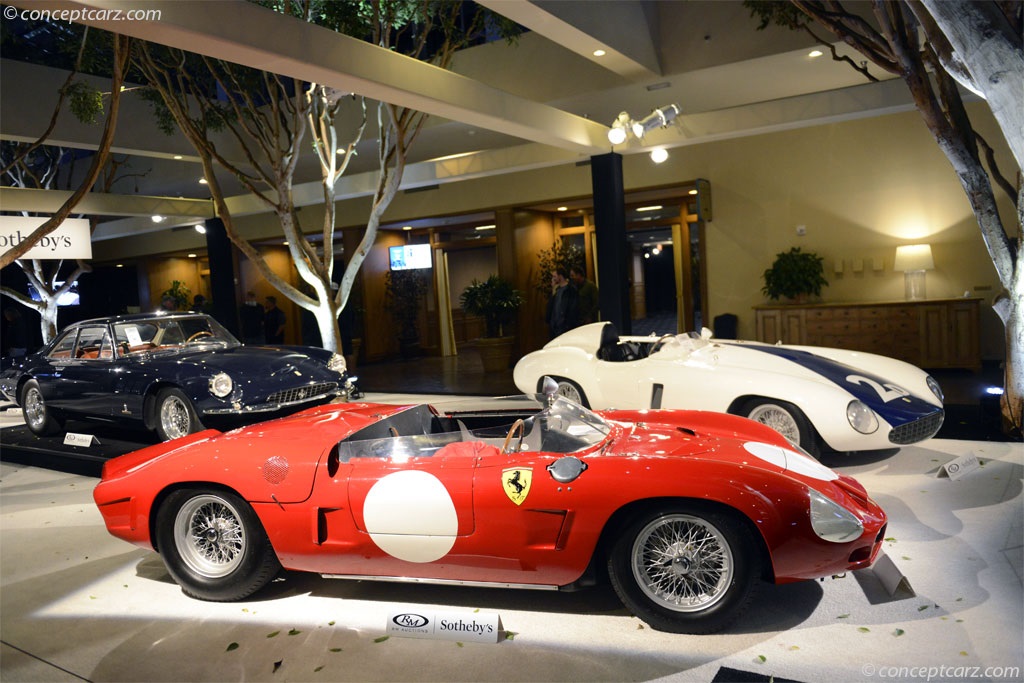
Roadster by Fantuzzi
Chassis #: 0798
Engine #: 0798
View info and history
Auction entries : 2
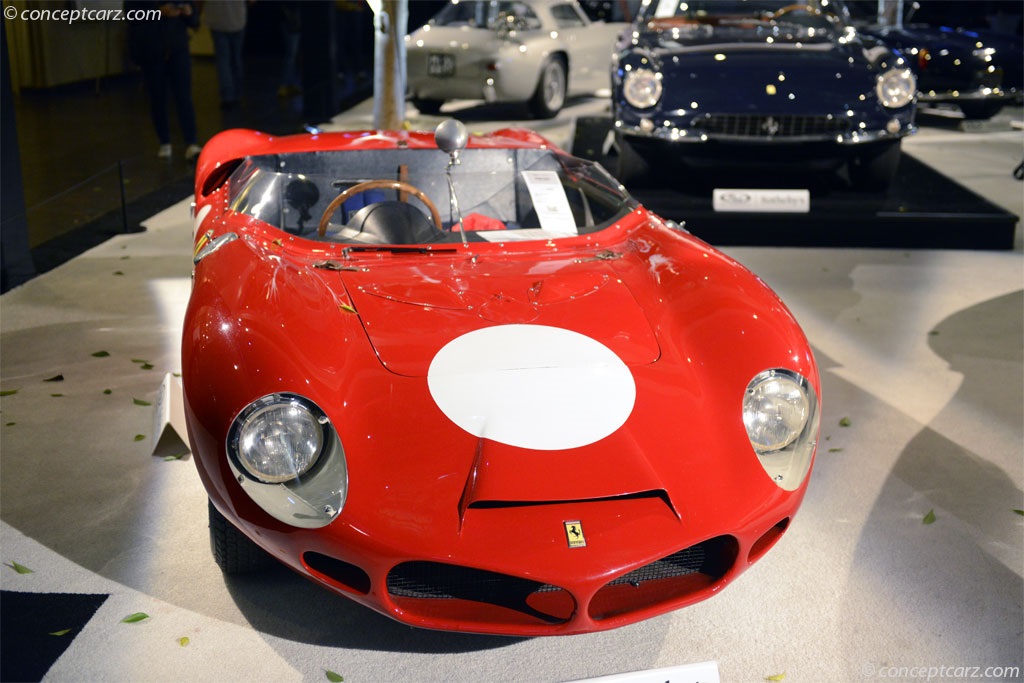
Roadster by Fantuzzi
Chassis #: 0798
Engine #: 0798
View info and history
Auction entries : 2
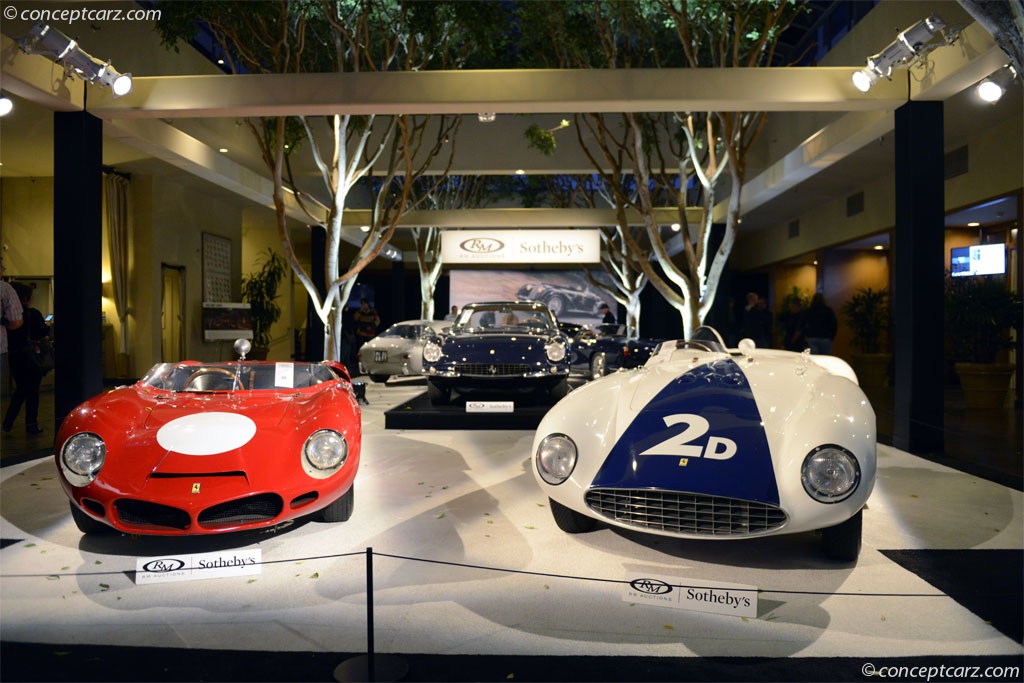
Roadster by Fantuzzi
Chassis #: 0798
Engine #: 0798
View info and history
Auction entries : 2
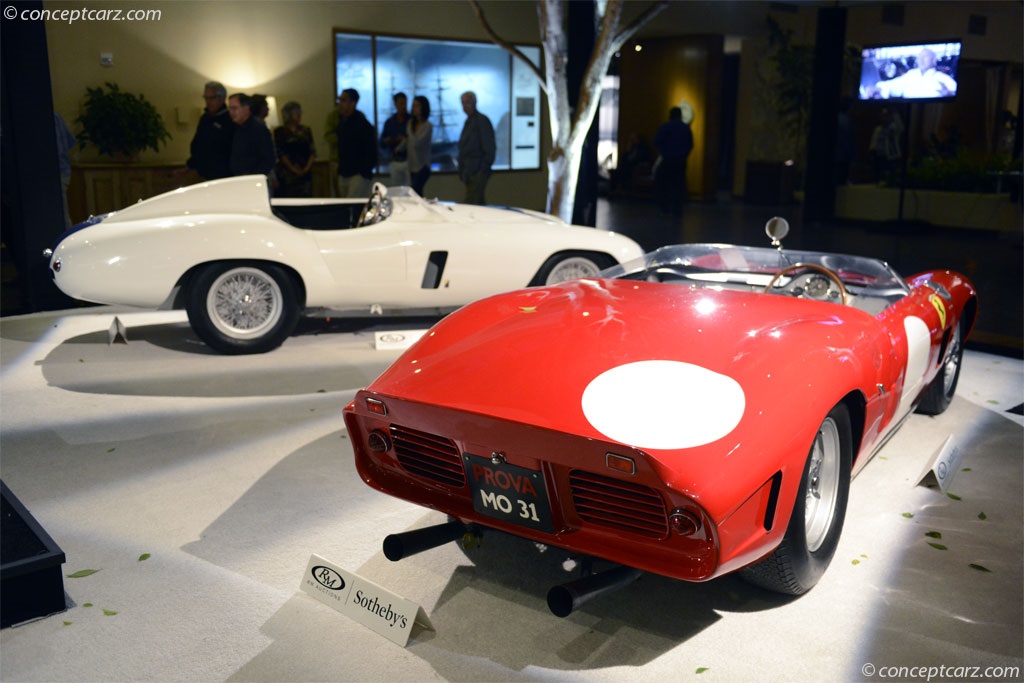
Roadster by Fantuzzi
Chassis #: 0798
Engine #: 0798
View info and history
Auction entries : 2
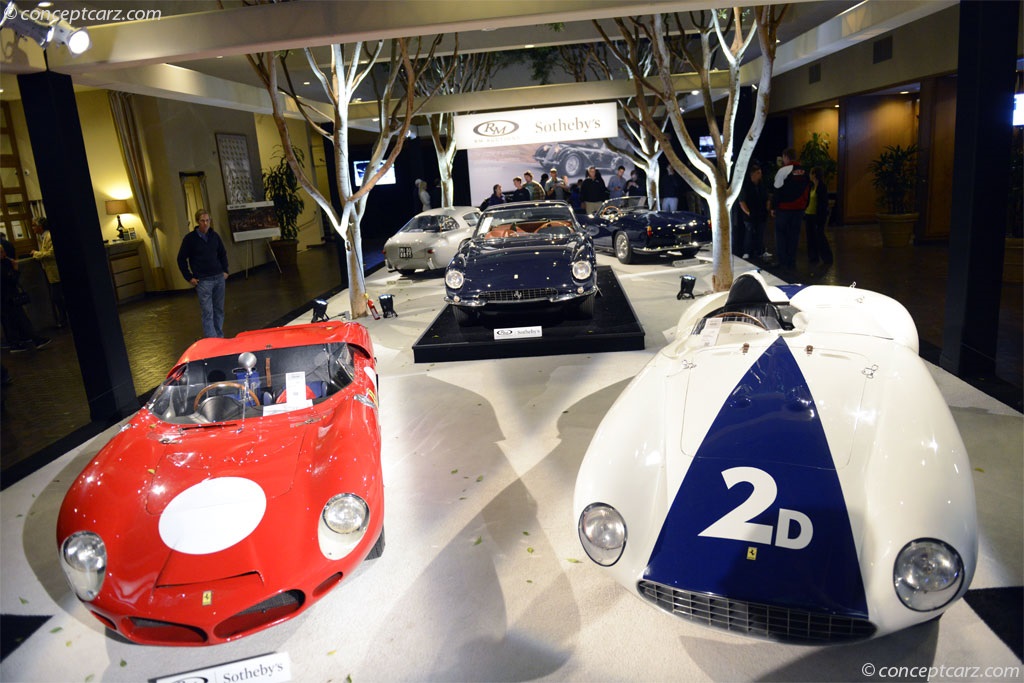
Roadster by Fantuzzi
Chassis #: 0798
Engine #: 0798
View info and history
Auction entries : 2
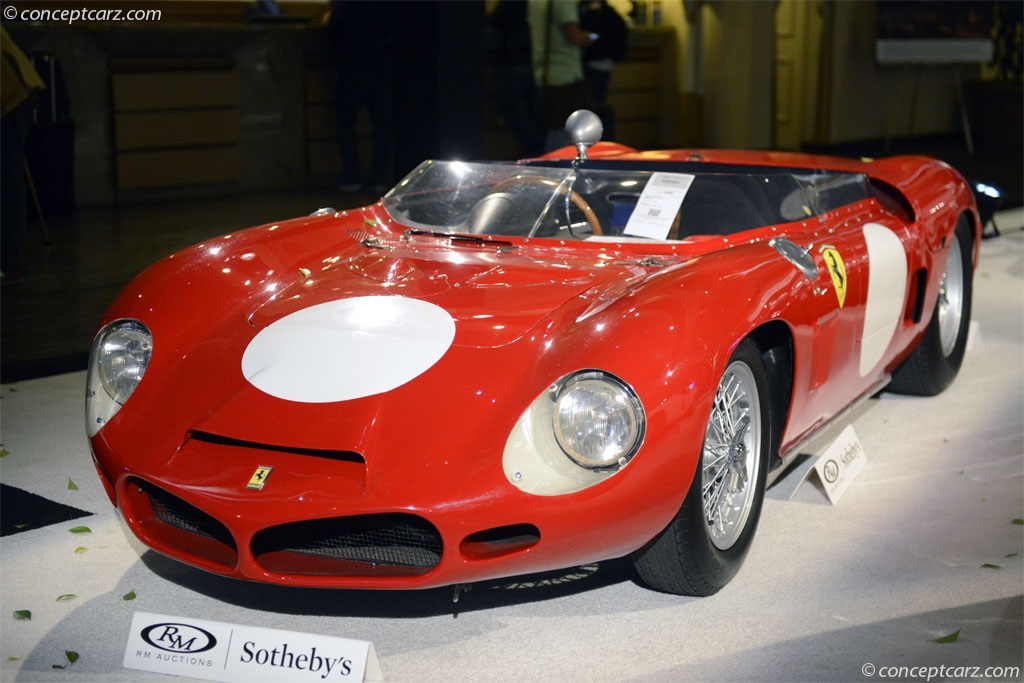
Roadster by Fantuzzi
Chassis #: 0798
Engine #: 0798
View info and history
Auction entries : 2
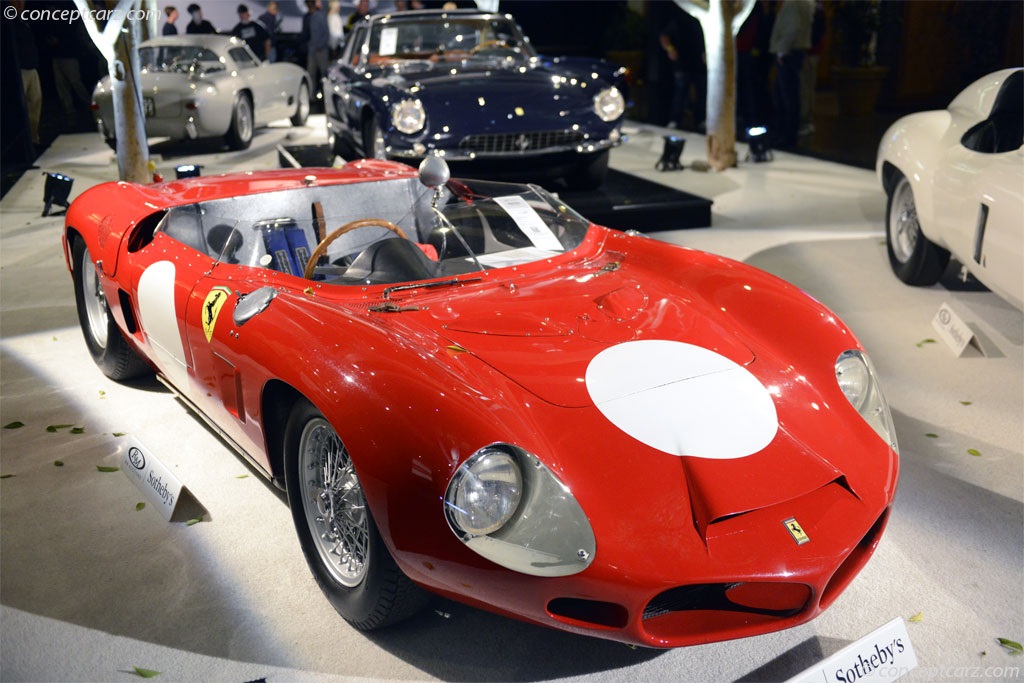
Roadster by Fantuzzi
Chassis #: 0798
Engine #: 0798
View info and history
Auction entries : 2
The 268 SP (0798) was driven by Scuderia Ferrari drivers Giancarlo Baghetti and Ludovico Scarfiotti in the 1962 24 Hours of LeMans, but were forced to retire after 18 hours due to transmission failure. The car was later acquired by Luigi Chinetti's N.A.R.T. team and raced in the Nassau Trophy by Lorenzo Bandini where it finished eighth overall and third in class in the trophy race. N.A.R.T. sold 0798 to John 'Buck' Fulp in 1963 who raced it in various races in the United States. At the 12 Hours of Sebring in 1963, Fulp and co-driver Harry Heuer placed 34th place overall and eighth in class, despite retiring early with a broken suspension. Fulp placed fifth overall and second in class at the '25 Lap Governor's Trophy' at the Bahamas Speed Week, followed by an eleventh overall and another second in class at the Nassau Trophy. Privateer Tom O'Brien of Patterson, New Jersey acquired it in January of 1964 and raced it frequently (along with his brother Jim) in East Coast SCCA events. The car placed 2nd overall and 1st in class at Marlboro in April 1964, and 1st overall at Cumberland in May. Next was another 1st overall finish at Bridgehampton in May, followed by a 5th place in August, 2nd place in October, and 1st overall a week later all at Lime Rock. These performances earned Tom O'Brien the 1964 SCCA Class D Modified Championship.
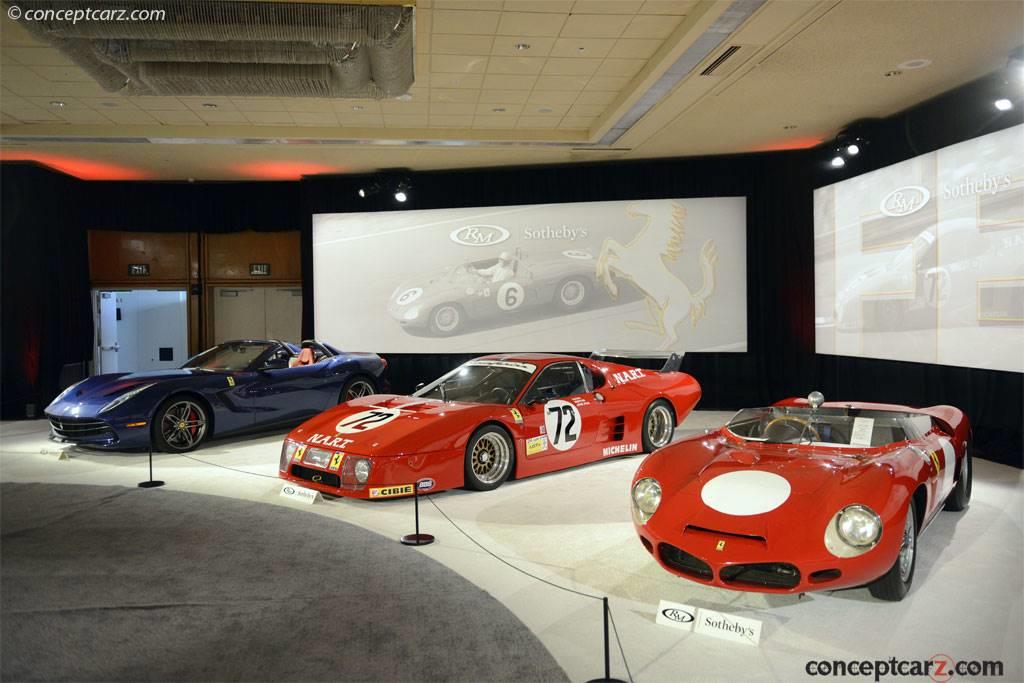
Roadster by Fantuzzi
Chassis #: 0798
Engine #: 0798
View info and history
Auction entries : 2
Chassis 0802 was the second 268 SP chassis and its racing career in this configuration was brief. Phil Hill was driving 0802 during a practice at the 1962 Targa Florio when it was involved in a major accident due to a stuck throttle. The damage was extensive and repairs were not completed in time for the race. Due to injuries, Phil Hill was sidelined and co-driver Olivier Gendebien was reassigned as a third driver for the 246 SP chassis 0796, the eventual winner of the race.
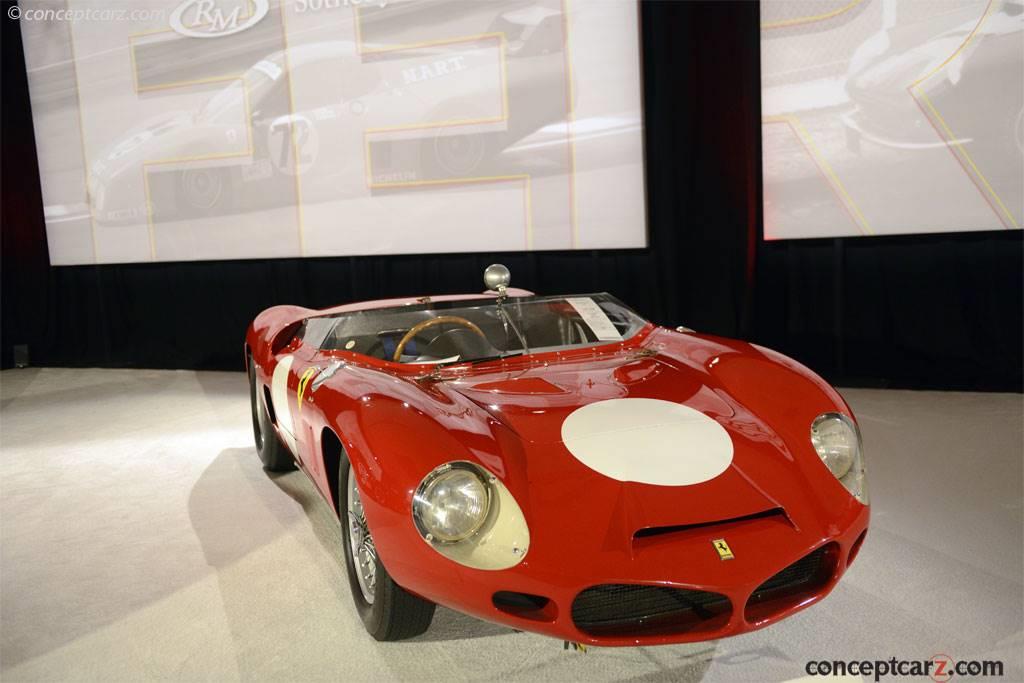
Roadster by Fantuzzi
Chassis #: 0798
Engine #: 0798
View info and history
Auction entries : 2
Chassis number 0806 was the third and final 248 SP built. It was completed in 1962 and raced by Scuderia Ferrari in the 1000 km Nürburgring with the Rodriguez brothers driving. On the 8th lap, Pedro Rodriguez crashed the car and it was unable to continue the race. When it was repaired later in 1962, it was converted into 196 SP specification.
by Daniel Vaughan | Dec 2021
1962 Ferrari 268 SP Vehicle Profiles
Recent Vehicle Additions
Related Automotive News

Just Sold! Gooding & Company Proudly Announces the Recent Private Sale of Racing Veteran 0704 TR, the Only Unrestored Ferrari 250 Testa Rossa in Existence
The collector car market leader recently brokered the private sale of the sole unrestored Ferrari 250 Testa Rossa extant. The overall winner of the 1958 12 Hours of Sebring, 0704 TR is recognized as one of the most significant racing Ferraris of all...

Ex-Surtees race-winner and rare Chinetti-commissioned Spider join Salon Privé's Ferrari 75th Anniversary class
Salon Privé Concours dElégance presented by Aviva introduces pair of important Maranello models - from road and track - in its Ferrari 75th Anniversary class
#1 - One of only two Ferrari 275 GTB4 S NART Spiders built with an aluminium body, and...
RRDC VOTES IN 26 NEW MEMBERS FOR 2015
HILLIARD, Ohio (Oct. 23, 2015) - Twenty-six race-car drivers and motorsports professionals have been voted into the Road Racing Drivers Club in 2015. The group includes 11 Regular Members from the open-wheel and sports-car racing ranks, 10 Associate...
Luigi Musso: Talented, Tempting and Troubled
Following Alberto Ascaris back-to-back titles in 1952 and 1953 there have been no Italian Formula One World Champions. While there has been a great amount of hope throughout the years, Italians have been left without a World Champion. Perhaps, it could...
1958 12 Hours of Sebring: Collins and Hill Escort a Red-Head Home to Victory
In a matter of months Peter Collins would lay dying of wounds received in a violent crash at the Nurburgring during the German Grand Prix. While many would be holding their breaths and facing the cold-hard truth of another motor racing death, there would...

















